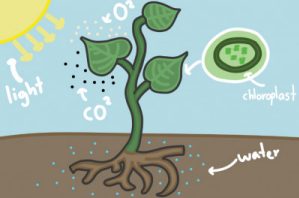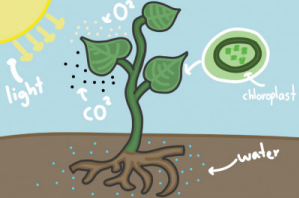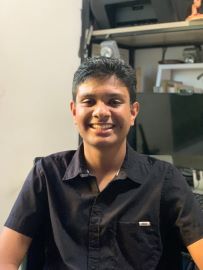The Fascinating Sphere of Photosynthesis

God created many lifeforms on earth. From these lifeforms, one of the most intriguing and magnificent beings is the plant. They are nature's own factories that work day in and out to provide us with oxygen, the necessity compound of everyday life. In doing so the plant is also helping itself by making its own food. Jan Igenhouz found out that plants use water and carbon dioxide in the presence of light energy to produce glucose and oxygen. This is a very complicated process that involves many parts of the plant, each of them having different functions We are now able to understand this complicated effect and many people are beginning to realize the importance of plants. Today we should appreciate these lifeforms and always try to respect them as best as we can.
The cling and clang of machines ring through the air. Millions of workers run about, each of them assigned a separate task. Each of them brings in materials that will be combined later on. Everyone in this factory is busy, fuelling an even bigger part of the structure. You may be wondering what this perplexing structure is. Well first of all you can find this factory right in your backyard. I'm not joking, this factory is a plant!

You may think I'm crazy right? Plants are living things not factories. But if you look closely at a plant you can see that it resembles one very clearly. Plants have the capability of making their food using something not very rare in nature. There is a special term for this and it is “Photosynthesis”. It’s a big word and an even bigger process. That’s why I have to oversimplify it because I can write more than 5 pages considering this. But five pages is pretty much so I’ll try to be brief.
Plants are heterogeneous lifeforms, meaning they can make their food. They produce Glucose which they eat. Oxygen is a by-product of this process, therefore giving photosynthesis a very important role in our society. During this process, plants take in carbon dioxide (CO2) and water (H2O) from the air and soil. There are specialized parts of the plant that aid in different things, for example, the roots are responsible for taking in water and minerals from the soil. The xylem then distributes the minerals to the leaves, where the next step takes place.
In the leaf, the palisade mesophyll cell contains the organelle, chloroplast. The chloroplast contains chlorophyll that gives plants its green colour. The lower layer of the leaf contains spores called stomata that absorb carbon dioxide. The carbon dioxide and water molecules finally get absorbed by the chloroplast. In this organelle, light energy gets trapped and this is used to synthesize glucose and oxygen from carbon dioxide and water. After that, the phloem of the plant transports the glucose to different parts of the plant. And the oxygen diffuses out of the stomata.
So, in conclusion, photosynthesis is a very underrated topic and should be given more attention to. Without photosynthesis, we wouldn’t have the life-sustaining gaseous oxygen that would be impossible to live without. Anyways this gives us another reason to be more considerate towards plants.
References:
https://www.nationalgeographic.org/encyclopedia/photosynthesis/
https://www.britannica.com/science/photosynthesis
https://www.livescience.com/51720-photosynthesis.html
Author biography
Ismail Mailak Mukhthar is a thirteen-year-old teenager who enjoys playing games, reading books, and drawing in his spare time. He is creative and kind, and always open to new ideas. He is a Maldivian and is studying at Jamaluddin School. He wants to get a good education and get a job at NASA. He likes long walks in the park and goofing around with his friends. He has participated in many events most notably the APCC convention in 2019.

Cite this article as:
Ismail Mailak Mukhthar, The Fascinating Sphere of Photosynthesis, theCircle Composition, Volume 2, (2022). https://theCircleComposition.org/photosynthesis/
